Olm eggs: Tense wait for baby Slovenian 'dragons'
- Published
See the mother olm in action in this infrared footage
In a Slovenian cave visited by a million tourists every year, a bizarre and rare amphibian is guarding a significant clutch of eggs.
The olm, a blind salamander found in cave rivers of the Balkans, is thought to live for more than 100 years but reproduces just once or twice a decade.
A female in an aquarium at the Postojna Cave, external has laid 50-60 eggs - and three of them are now showing signs of growth.
Nobody knows how many will hatch, or even precisely how long it will take.
"Right now it looks like three are good candidates," Saso Weldt, a biologist working at the cave, told the BBC.
He and his colleagues have taken very long-exposure photographs in the darkened cave, in order to glimpse evidence of the tiny embryos developing.
"She started laying eggs on 30 January. She is still laying one or two eggs per day, and they need something like 120 days till they hatch."
'Quite extraordinary'
That is an uncertain estimate, he explained, based on a colony of olms that was established in the 1950s in an underground lab in the French Pyrenees, external. There, they live in slightly warmer water, at 11C.
"In our cave, it is slightly cooler, 9C, so everything will be prolonged."
It is a unique opportunity to observe the enigmatic olm - also known as the proteus - reproducing in the same caves where it has lived for millions of years.
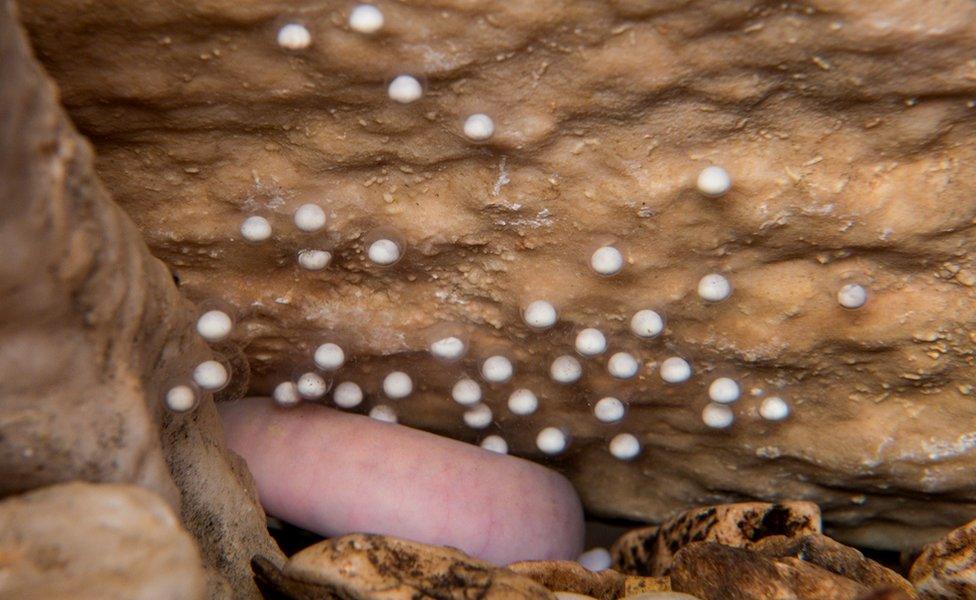
Nearly 60 eggs have been laid on the underside of a rock

It will probably be at least four months before any eggs hatch
"It is very significant because there is not a lot of data about anything, [relating to] the reproduction of this group of animals," commented Dusan Jelic, a Zoological Society of London Edge Fellow, external who studies wild olms by diving underwater through cave systems in Croatia.
If the baby olms hatch and develop healthily, Dr Jelic said, it would be "something amazing".
"In the wild, we never find eggs or larvae. They are probably hidden within some very specific localities within the cave systems."
There is just such a labyrinthine cave system in Postojna, with its own population of wild olms - but remarkably, this particular clutch of eggs has been laid in an aquarium in the cave's heavily trafficked visitor area.
"This is very cool - it is quite extraordinary," said Primoz Gnezda, another biologist working at Postojna Cave. "But also, we are quite scared that something will go wrong, because the eggs are very sensitive."
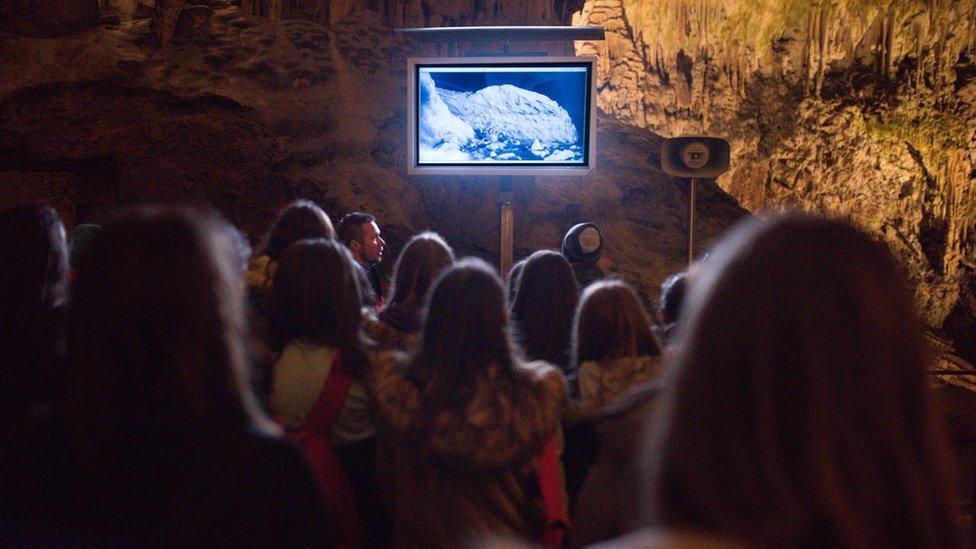
Visitors can see the female olm via an infra-red camera
As the only cave vertebrate in Europe, the olm is very well adapted to its sheltered, subterranean realm: karst caves, created as water eats its way through soluble rocks.
"For 200 million years they were in an environment that didn't change," said Dr Jelic.
As a consequence, the animals - and especially their eggs - are very vulnerable to changes in water quality and temperature. Even the seasons barely reach underground.
Baby dragons
Back in 2013, another of Postojna's captive olms laid eggs - but none of them hatched and many were eaten by the other olms in the tank.
This time, precautions have been taken. All except the mother olm have been removed and the aquarium is boarded up, to protect the eggs from light. Extra oxygen is being added.
"Now it's up to them," said Mr Weldt.
An infrared camera feeds live video to a nearby screen so that the cave staff, as well as tourists, can see what happens.

Olms have skin-covered, sightless eyes and protruding gills

They swim like eels and can go 10 years without food
There is almost no movement, but occasionally the female olm stirs to check the eggs, to lay another, or to fend off amphipods - small, hungry crustaceans which she cannot see, but detects using electro-sensitive organs in her snout.
The animal also has a powerful sense of smell, which helps monitor the eggs.
"The eggs have a smell, so she can recognise which are alive and which are dead," explained Mr Weldt. "And because food is so scarce in the cave system, she eats the ones that are not fertilised."
The proteus is something of an icon in Slovenia, even appearing on coins before the arrival of the euro. Hundreds of years ago, when floods occasionally washed the creatures from the region's caves, they were regarded suspiciously as baby dragons.
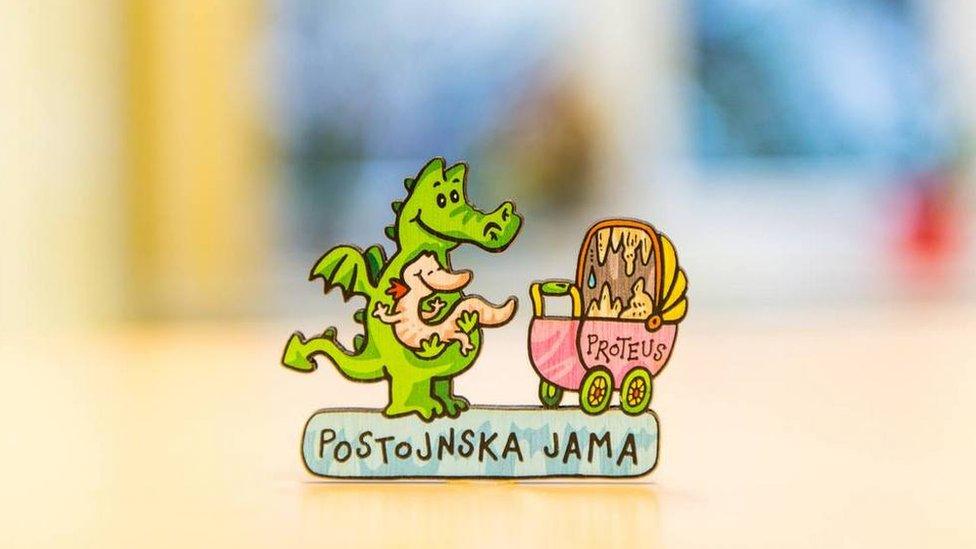
The baby olms are the subject of newspaper cartoons and fridge magnets
In the last few weeks, the Postojna "dragon mum" has become quite a celebrity and carries a weight of expectation on her slimy shoulders.
The cave biologists feel it too.
"It is a challenge and a responsibility," said Mr Weldt. "I'm excited."
Follow Jonathan on Twitter, external
- Published24 March 2015

- Published31 December 2014

- Published31 October 2014

- Published20 November 2012
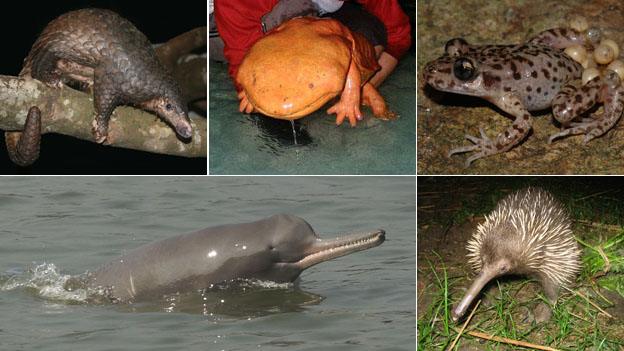
- Published22 February 2012
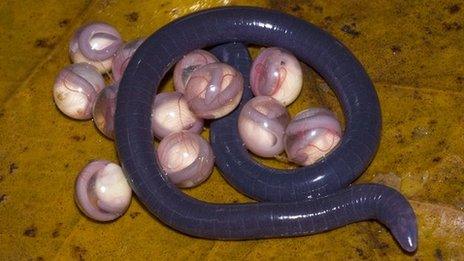
- Published22 September 2010